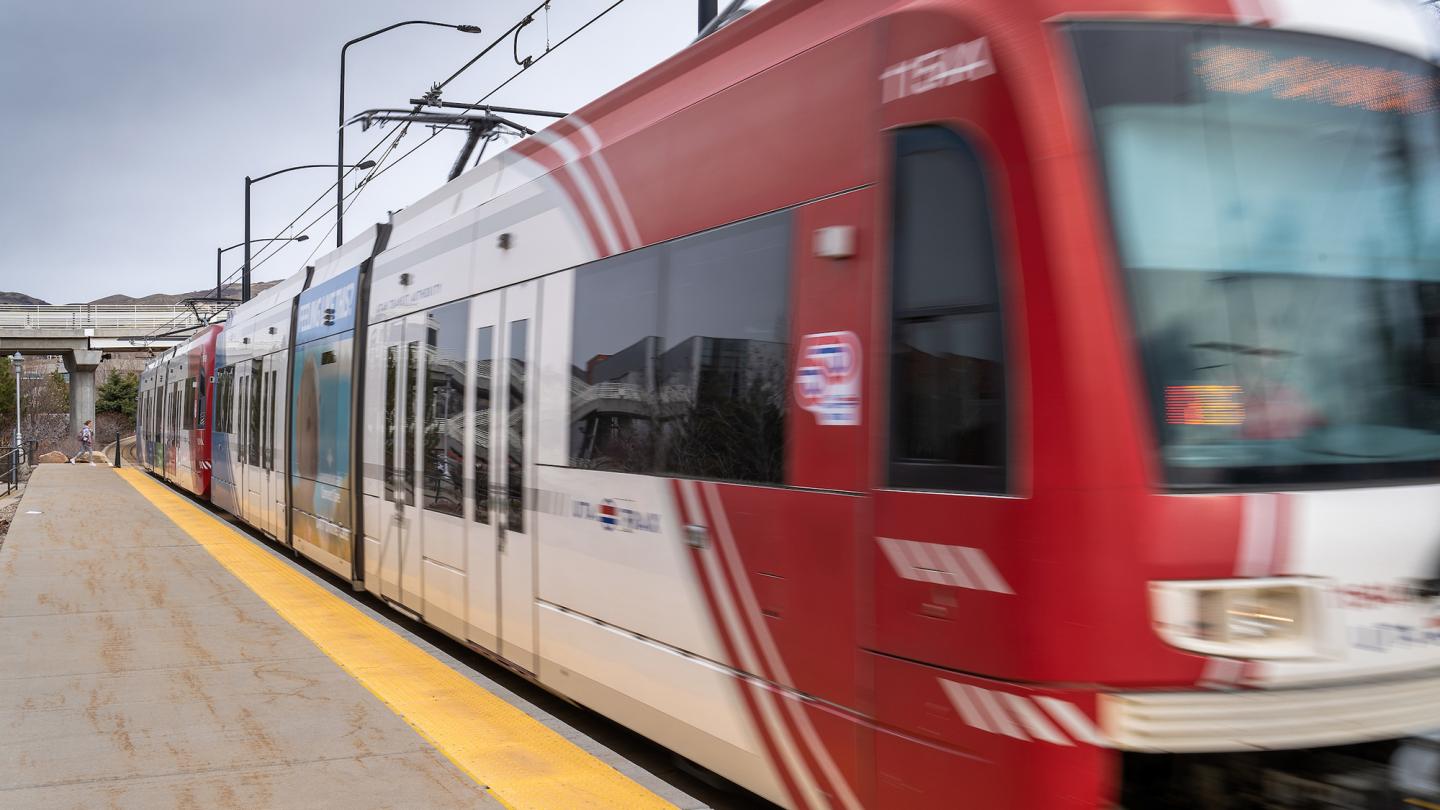FORT SMITH, Ark – Research-grade air quality sensors are costly–around $40,000. For cities trying to monitor their greenhouse gas emissions, the cost may limit the number of sensors they can install and the data they can collect.
Since 2014, the University of Utah has maintained research-grade suites of air quality instruments installed on light rail trains that move throughout the Salt Lake Valley every day. These mobile sensors, researchers estimate in a new study, cover the same area as 30 stationary sensors, providing the Salt Lake Valley with a highly cost-effective way to monitor its greenhouse emissions and fill in gaps in emissions estimates. The study is published in Environmental Science & Technology.
“Pollutant levels in the atmosphere are going to be rapidly changing in the coming decade as clean energy technologies are deployed,” says Logan Mitchell, research assistant professor of atmospheric sciences, and a co-author of the study. “Cost-effective atmospheric monitoring will help policymakers understand what policies lead to reductions in pollutant levels, where there needs to be more focus, and if there are environmental inequalities emerging as some areas reduce their emissions faster than other areas.”
Taking the show on the road
The upwind atmospheric area sampled by four current stationary air quality monitors (left) compared with the area sampled by a train-based mobile sensor.
The story of mounting sensors on the trains of the Utah Transit Authority’s TRAX system begins in 2009 with then-doctoral student Heather Holmes (now an associate professor of chemical engineering). Holmes installed a particulate matter sensor on a train but for only a short period of time.
When Mitchell arrived at the U as a postdoctoral scholar in 2013 he discussed reviving Holmes’ project with faculty advisors Jim Ehleringer, distinguished professor of biology, and John Lin, professor of atmospheric sciences and a co-author of the current study. With support from UTA, Mitchell ran a preliminary study in 2014.
They first test placed air inlet tubes out the window of an unoccupied driver’s cab. “I noticed that there was a small CO2 bump every time the TRAX train stopped at a train station,” Mitchell says. “This confused me initially, but I realized that the inlet tubes sticking out of the driver window were actually picking up human respiration from people standing at the train platform waiting to board the train!”
The test was a success, and Mitchell partnered with professor John Horel’s research group to launch a full-fledged research effort to monitor air quality and greenhouse gases–this time with the sensors on the roof of the train so they aren’t affected by people waiting on the train platforms.
Now the program has expanded to additional TRAX lines and ongoing state funding supports the air quality monitoring while additional funding from the National Oceanic and Atmospheric Administration supported this study on greenhouse gas emissions.
Top-down emissions measurement
The study evaluates the TRAX air sensors as a top-down measurement of greenhouse gas emissions. “Top-down” analysis means measuring the atmospheric concentration, and then figuring out where the emissions come from. Another approach, “bottom-up” analysis, inventories all the possible emissions sources and adds them together to estimate the total.
“Top-down measurements allow us to evaluate if the bottom-up emission inventories are accurate,” says Derek Mallia, lead author of the study and research assistant professor of atmospheric sciences. “If an emission inventory is off by a little bit or is missing an emissions source, the top-down approach gives us a way to figure that out.”
NASA satellites can also be used to estimate top-down emission estimates for cities around the world, an effort Lin and his group are also pursuing. “These satellite measurements are useful for assessing whole cities and for cities that lack ground observations,” Lin says, “but the TRAX-based sensors allow for more granularity in emissions throughout the city and can complement the space-based observations.”
Top-down measurements of this type over a large area can focus in on particular elements of a city’s emissions inventory to identify ways that the inventory needs to change.
“A really simple example of this would be looking at on-road emissions,” Mallia says. The researchers found underestimates of on-road emissions by bottom-up inventories, which if observed by only a stationary sensor near a single main road would suggest only potential underestimations for that particular road. But if on-road emissions are being underestimated consistently over an entire city, Mallia says, “fundamentally, this tells us that we are not accounting for something about on-road emissions, in general. This could be really important to understand as more and more people start driving electric vehicles that have zero tailpipe emissions.”
As cities work to reduce environmental inequalities, mobile air monitoring can also help monitor if some urban areas’ air is improving faster than others, Mitchell adds.
A model for cities to follow
“The TRAX-based measurements, combined with the network of stationary sites, means that Salt Lake City is one of the best-instrumented cities in the world in terms of pollution observations,” Lin says.
To the researchers’ knowledge, air quality sensors have been installed on public transport platforms in only a handful of cities in Europe. But the same approach could be used in any city with similar light rail systems–Portland, Oregon and Denver, for example. In cities with rail systems that run partially or entirely underground, sensors could be mounted on electric buses.
The cost savings of such an approach is staggering. One research-grade mobile sensor costing $40,000, the authors find, can cover the same area as around 30 stationary sensors costing upwards of $1.2 million.
“This excludes the manpower needed to maintain a 30-station network, which would be immense,” Mitchell says. “Long story short–based on our preliminary analysis, semi-continuous mobile measurements on public transit vehicles are a very cost-effective strategy for monitoring emissions in cities.”

